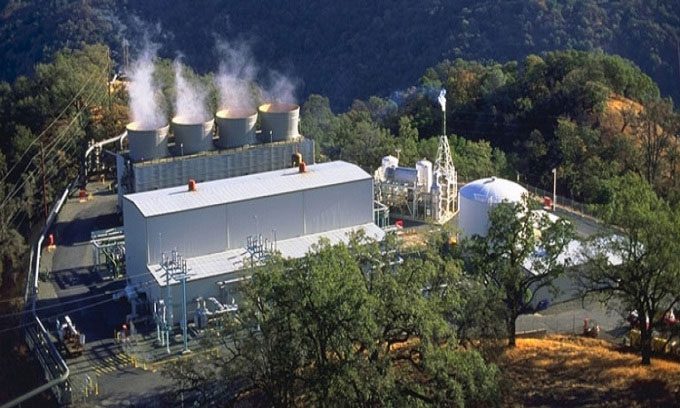The Geysers: A Geothermal Power Hub in California
Approximately 1.3 million years ago, a magma body rich in silica shifted through the Earth’s crust beneath the Coast Range in northern California. Today, that magma body remains hot, and the area above it, covering 120 km2, is known as The Geysers, according to Sci Tech Daily. This is the largest geothermal power field in the world. Located 13 km northeast of Geyserville, this region is home to 18 power plants that utilize steam to drive turbines for electricity generation. The white roofs of some of the power plants can be seen in a natural color satellite image captured by the Operational Land Imager (OLI) on the Landsat 8 satellite on January 10, 2022.

Geothermal power plant at The Geysers. (Photo: Pinterest)
The steam turbines in the area can produce 725 megawatts of electricity, enough to supply a city the size of San Francisco. The power plants at The Geysers typically meet the electricity demands of Sonoma, Lake, and Mendocino counties, as well as parts of Marin and Napa counties. As of 2018, the turbines at The Geysers generated 50% of California’s geothermal electricity.
Geothermal energy is produced by harnessing heat from the Earth’s interior through natural steam or hot water. This is a reliable and always available renewable energy source. Three essential factors for generating geothermal energy include: magma close to the surface, fractured or permeable rock, and fluids that can circulate through the hot rock. At The Geysers, the magma body that rose over a million years ago is located just one kilometer below the surface. Portions deeper than 2.5 km can reach temperatures of 400 degrees Celsius.
While most thermal power plants exploit water reservoirs, according to the U.S. Geological Survey, The Geysers system is one of only two steam-based systems in the world, meaning the magma generates steam directly, which can be more efficiently harnessed for electricity production.
A small steam engine generator was first used to generate electricity here in the 1920s, and the first modern geothermal well was drilled in 1955. In the following decades, numerous operators drilled and developed geothermal power plants, bringing The Geysers to its peak output in 1987. At that time, there were 21 power plants in the area with a total capacity of over 2,000 megawatts.
By the mid-1990s, plant operators transitioned to enhanced geothermal systems (EGS) to maintain electricity production and extend the lifespan of the field. Water is pumped at high pressure to reopen natural fractures in the rock, allowing hot water or steam to flow into the wells.

















































